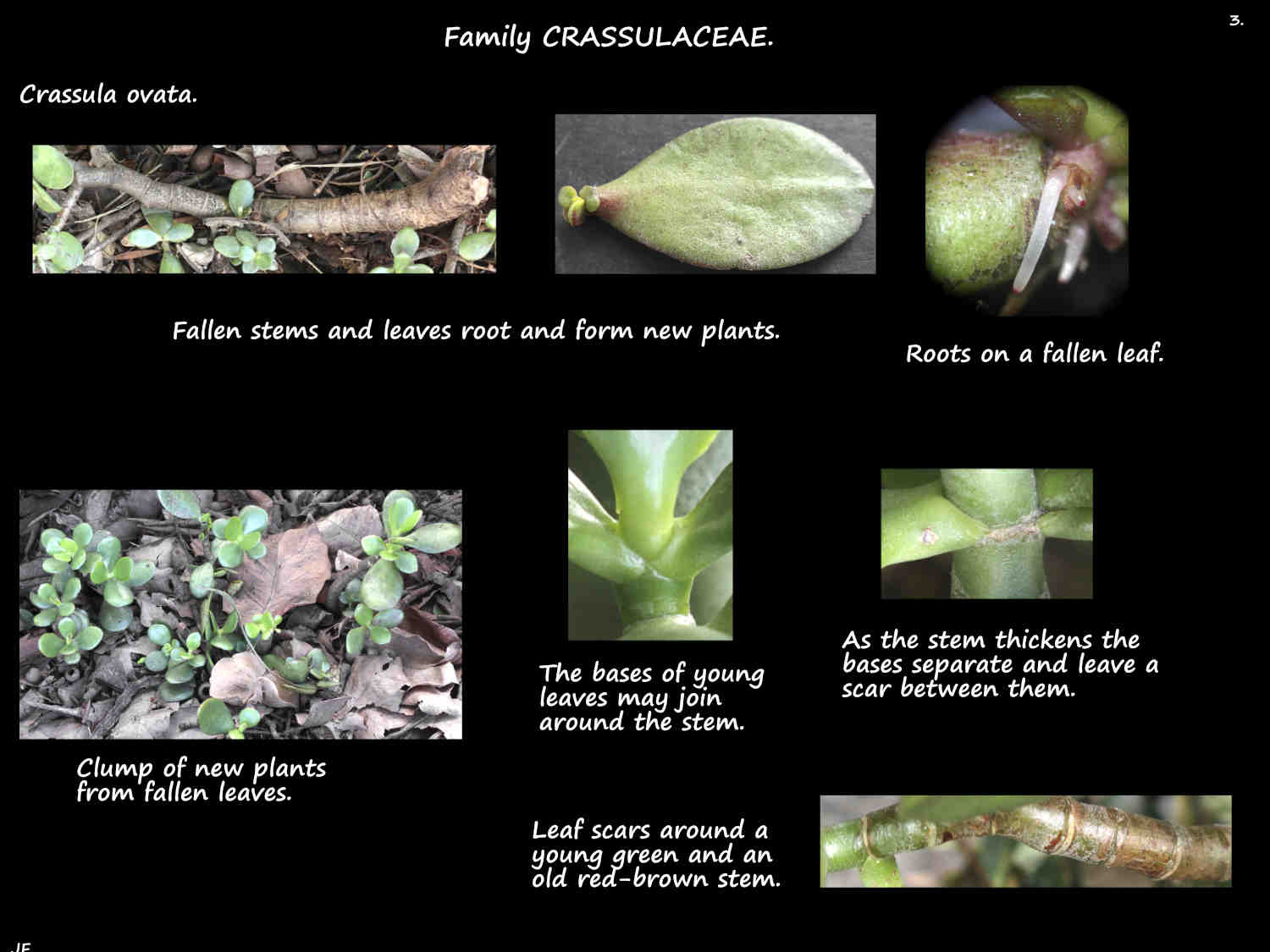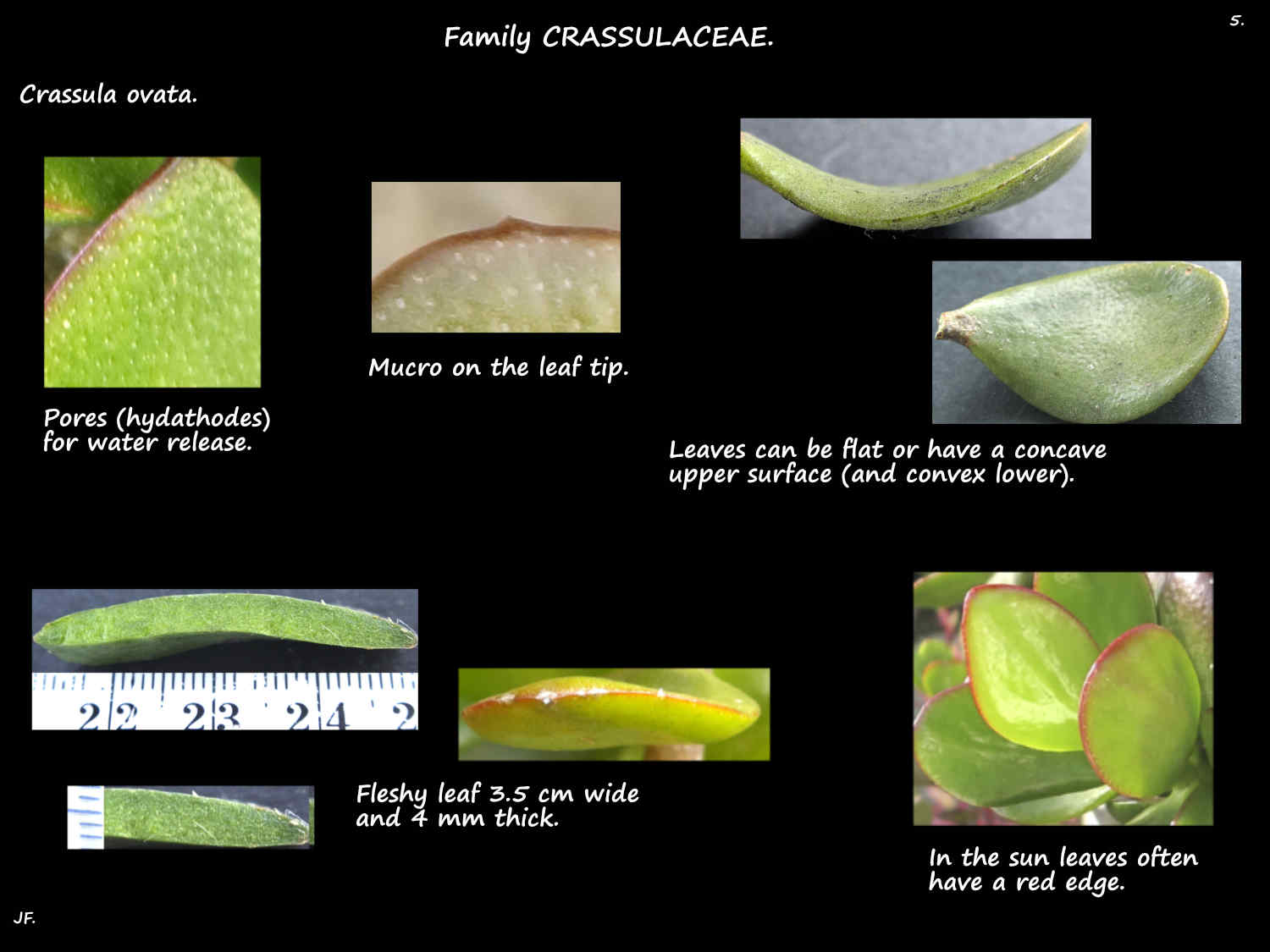Crassula ovata.
Commonly know as Jade because the leaves are the colour as the semiprecious Jade stone.
There are 9 synonyms, 6 in the Crassula genus (including Crassula argentea and Crassula portulacea) plus Cotyledon and Toelkenia ovata.
Commonly seen as 0.5 to 1 m high rounded shrubs they can be over 3 m.
Over time they can develop a dominant stem up to 20 cm across and become tree-like.
Bark on old trunks peels in horizontal strips.
The many succulent young green branches become greyish and woody.
There are scars where the lower older leaves have fallen.
Fallen stems and leaves root quickly and this is the main means of propagation.
Leaves are opposite and in 4 ranks (decussate).
Some have a petiole up to 4 mm long but most have a base that tapers.
Young pairs of leaves may have their bases joined around the stem but they separate as the stem thickens.
Leaves, up to around 6 cm long and 2 to 3 cm wide vary in shape and size between plants.
The fleshy leaves are clustered at the branch ends.
Leaves are obovate to broadly elliptic or rounded with a mucro on the rounded tip.
They can be flat or have a concave upper surface.
In the sun they may develop a narrow clearly defined red edge.
Leaves are smooth and shiny with pores for water release.
Dense to loose branched terminal inflorescences can almost cover the plant.
They are on a stalk or peduncle up to 4 cm long.
Flowers, on a pedicel up to 8 mm long open from the tip of each branch first.
The fleshy saucer-shaped calyx has the sepal bases fused for around 1 mm.
The 5 (3 to 6) triangular lobes, 1 to 2 mm long have a ridge or keel near the tip.
The corolla has a short basal tube around 1 mm long with 5 (3 to 6) lobes.
The oblong to lance-shaped lobes, up to 1 cm long spread out like a star and may curve back.
The white petals, sometimes with pink tints taper towards the tip which has a mucro.
Stamens are equal in number to the petal lobes with which they alternate.
Filaments, around 5 mm long have purple anthers.
The pale yellow fleshy nectary scales at the base of the carpels are around 1 mm wide and 0.5 mm high.
The ovary has 5 (4-6) mainly free carpels with a thin 2.5 mm style.
The fruit are oblong to ovoid follicles around 3 mm long.
There are a few cultivars with leaves of different shapes and colours.
J.F.












